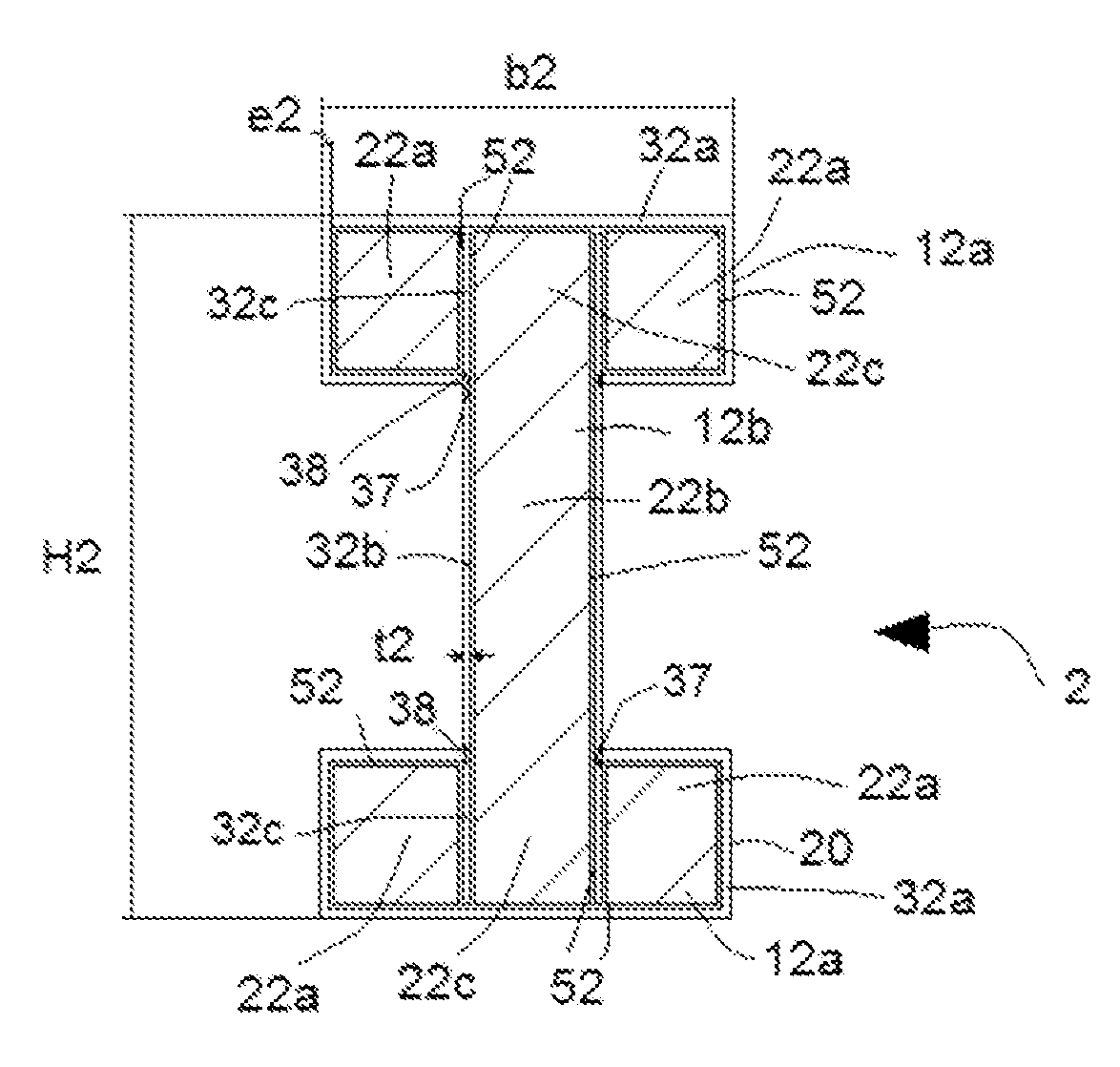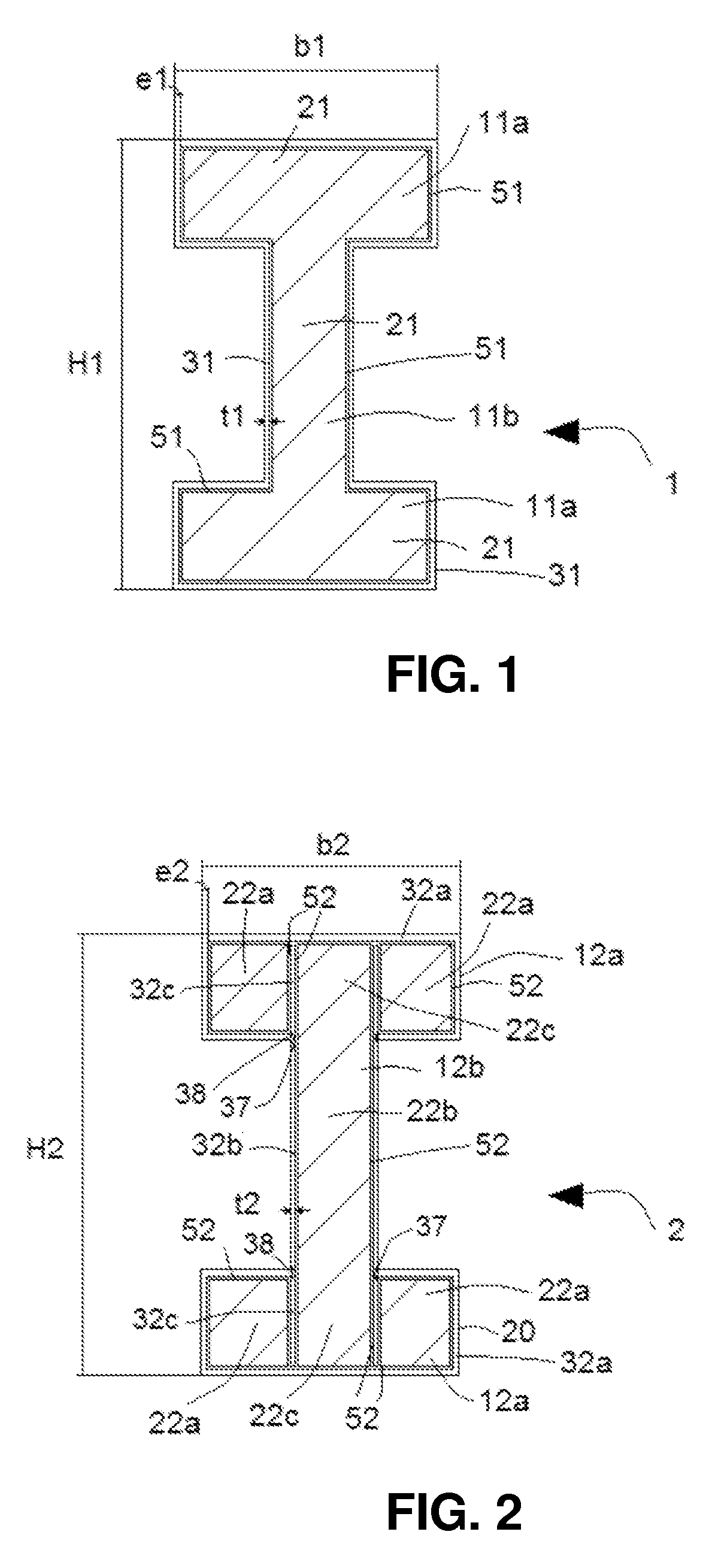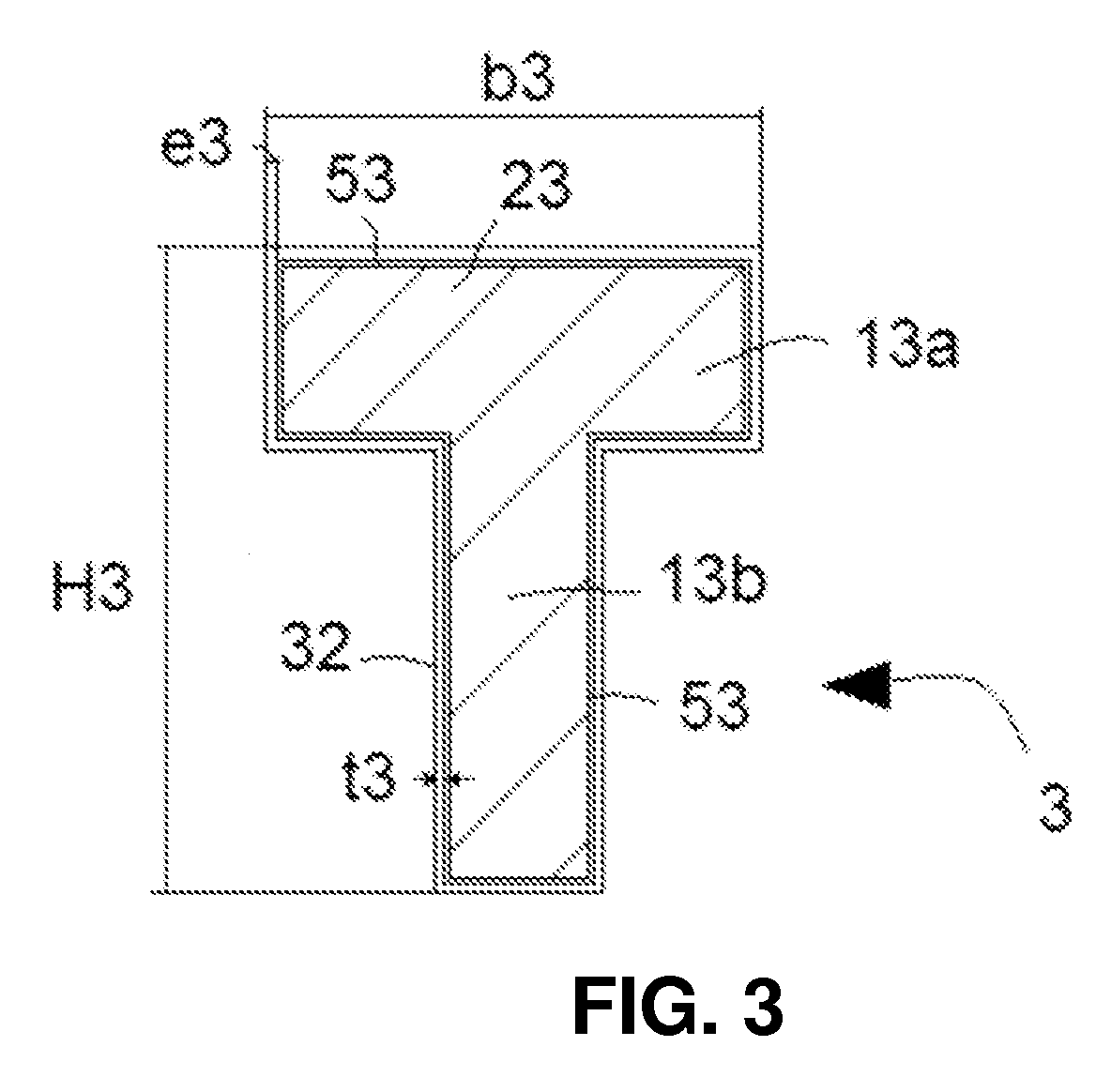Formwork support beam
a technology of support beams and structural members, applied in the direction of girders, joists, trusses, etc., can solve the problems of heavy beams, adverse weather conditions, and structural members that are subject to significant mechanical stresses, and achieve improved mechanical properties, improved durability, and improved mechanical properties
- Summary
- Abstract
- Description
- Claims
- Application Information
AI Technical Summary
Benefits of technology
Problems solved by technology
Method used
Image
Examples
Embodiment Construction
[0019]The formwork structural member 1;2;3;5 shown in FIGS. 1 to 5, according to the invention, meets the mechanical requirements demanded of formwork support beams.
[0020]In the embodiments shown in FIGS. 1,2 and 4, the formwork structural member 1;2;5 has a section substantially or an I or double T shape, comprising a web 11b;12b;15b and two flanges 11a;12a;15a each one of which extends continuously from an end of the corresponding web 11b;12b;15b. The mechanical and dimensional requirements of these formwork structural members are set out in the EN13377:2002 standard. The formwork structural member 1;2;5 is thus defined by a height H1;H2;H5 that is between approximately 160 mm and approximately 240 mm, and a width b1;b2;b5 of the respective flange 11a;12a;15a between approximately 65 mm and approximately 80 mm. In addition, the formwork structural member 1;2;5 supports, depending on the height dimension H1;H2;H5 and the width b1;b2;b5 of the respective flange 11a;12a;15a, a flexur...
PUM
 Login to View More
Login to View More Abstract
Description
Claims
Application Information
 Login to View More
Login to View More - R&D
- Intellectual Property
- Life Sciences
- Materials
- Tech Scout
- Unparalleled Data Quality
- Higher Quality Content
- 60% Fewer Hallucinations
Browse by: Latest US Patents, China's latest patents, Technical Efficacy Thesaurus, Application Domain, Technology Topic, Popular Technical Reports.
© 2025 PatSnap. All rights reserved.Legal|Privacy policy|Modern Slavery Act Transparency Statement|Sitemap|About US| Contact US: help@patsnap.com



